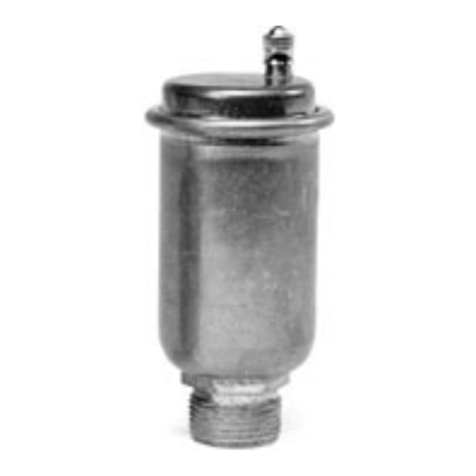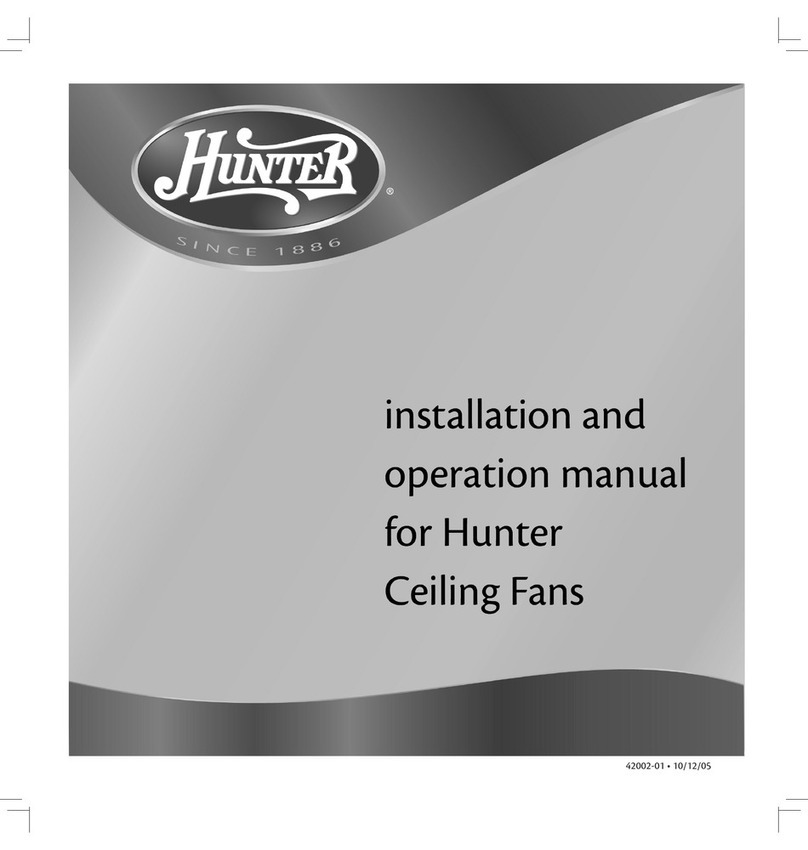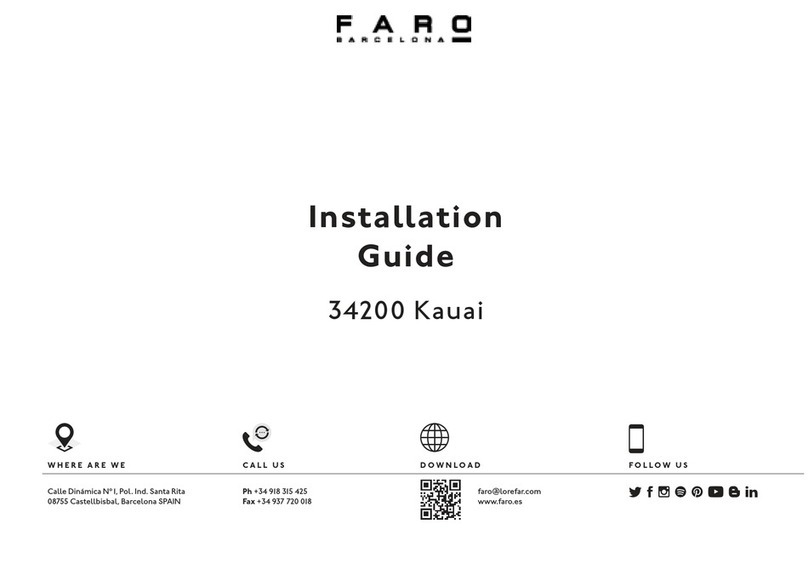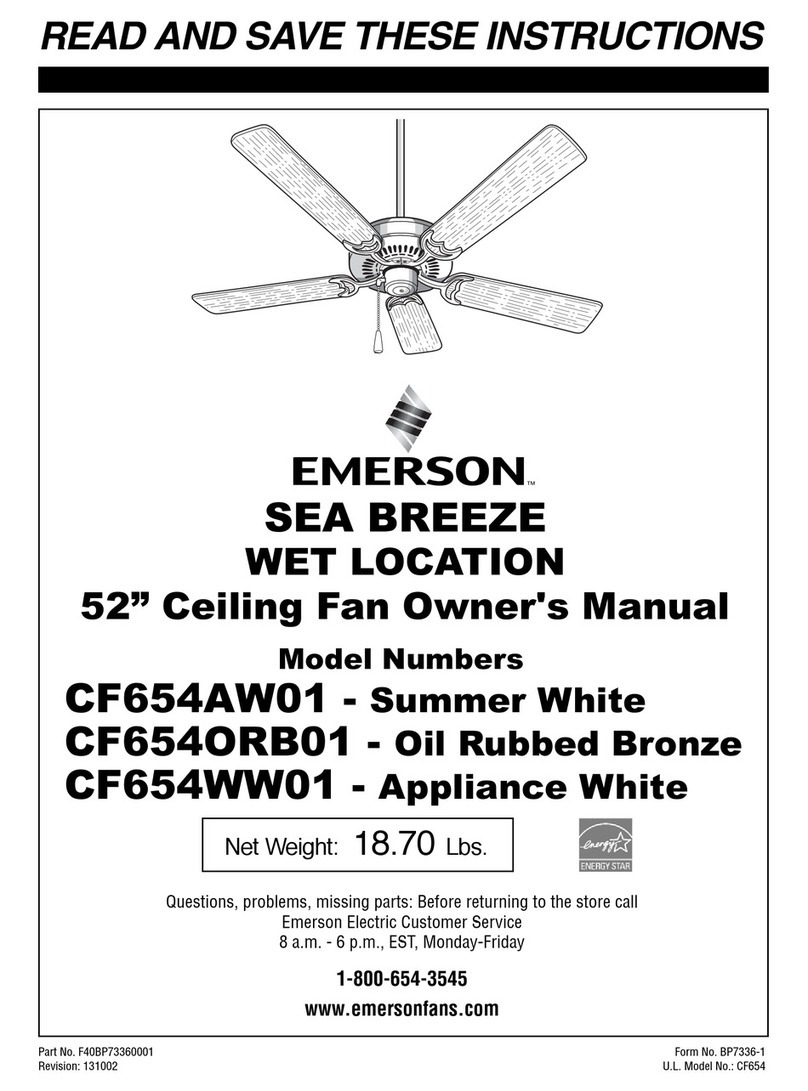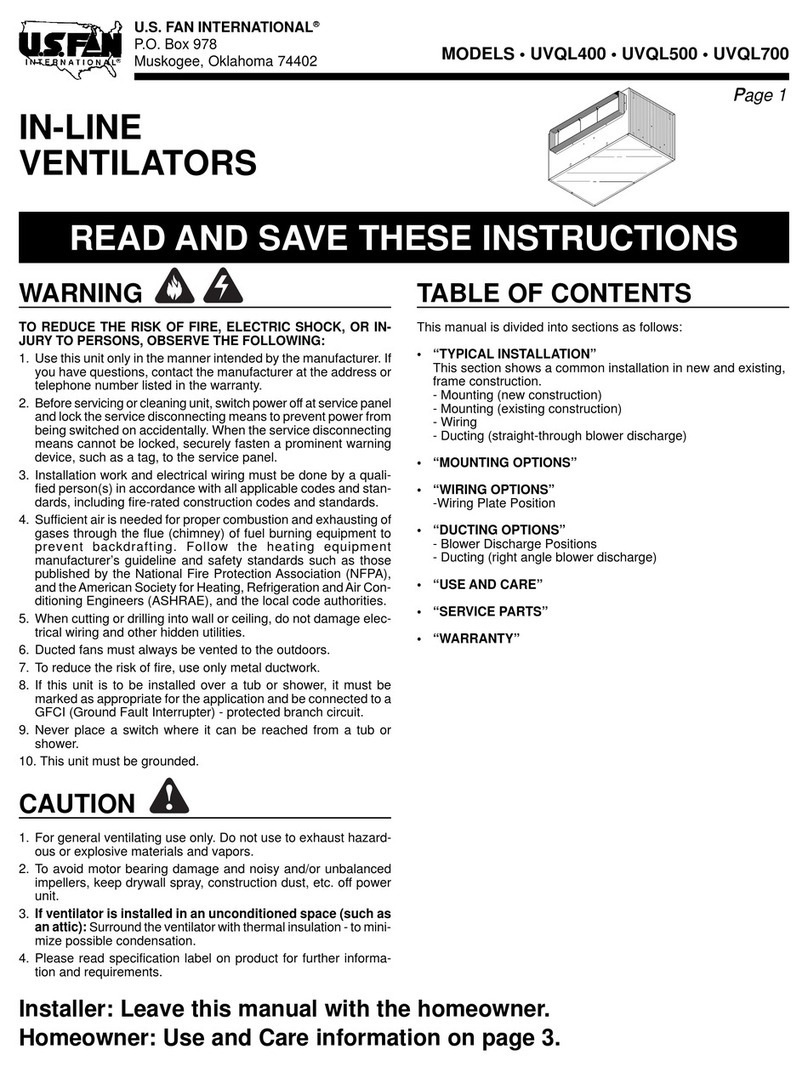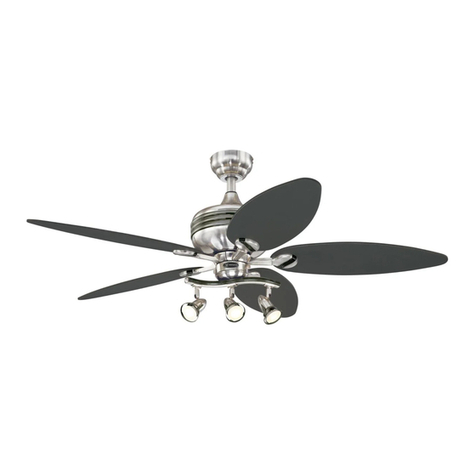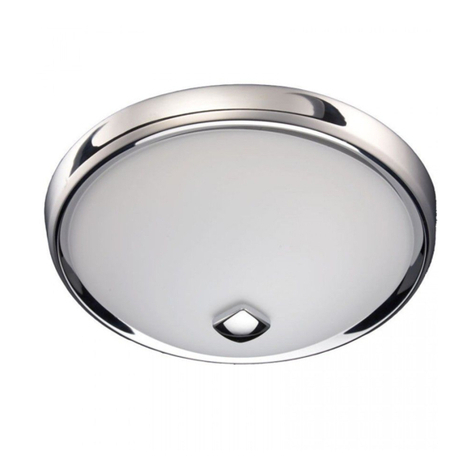NOVENCO Novax Instruction Manual

MU 14309 0410 1
918768-0
GB
Installation and maintenance
for Novax fan type ACL
1. Application
2. Handling
2.1 Marking
2.2 Weight
2.3 Transport
3. Storage
4. Installation
4.1 Preparation
4.2 Installing the fan
4.3 Installing the acoustic diffuser (op-
tional)
4.4 Duct connection (alternative)
4.5 Electrical connection
5. Start-up
5.1 Before start-up
5.2 Motors with Δ/Y starter
5.3 Start-up procedure
6. Maintenance
6.1 Safeguards prior to inspection and
maintenance
6.2 Fan housing
6.3 Impeller
6.4 Motor
6.5 Detaching the motor
6.6 Fitting the motor
6.7 Blade adjustment
6.8 Fault finding
7. Testing functionality and
operational readiness
7.1 Periodic inspection
8. Sound
9. Declaration of conformity
1. Application
Novax ACL fans are compact, sturdy ax-
ial flow fans. They are designed for re-
placing existing fans for energy-saving
reasons. The fans are capable of meeting
everyday ventilation requirements un-
der normal conditions in all types of
commercial and industrial buildings.
Please read the relevant sections of these
instructions carefully before installing
the product or performing any mainte-
nance.
2. Handling
2.1 Marking
ACL fans are equipped with nameplate,
stating Novenco’s name and address
and providing information on product
type, e.g. ACL 710/380, serial or order
number, and fan speed.
A motor nameplate with relevant motor
data, including insulation class, is also
provided.
2.2 Weight
The total weights of ACL axial flow fans
are shown in table 1.
2.3 Transport
During transport, care must be taken to
prevent water (e.g. rainwater) from en-
tering the motor or other sensitive com-
ponents.
Novax ACL fans are supplied on pallets
or skids, enabling fork-lift transport. The
forks must be positioned beneath the
base. The unit must be set down as slow-
ly as possible on a soft surface. Impacts,
vibrations and falls may cause imbal-
ance and deformation or damage to mo-
tor bearings.
3. Storage
Novax fans can withstand outdoor stor-
age for up to one month providing the
packaging is intact. After removing the
packaging, fans must be stored in a rain-
proof shelter.
If stored indoors under well-ventilated
conditions with no risk of condensation,
storage duration may be extended to six
months.
The storage place must not be exposed to
vibrations, which may damage the mo-
tor bearings. If stored for longer than
three months, the impeller should be
turned regularly by hand.
4. Installation
Before installing the ACL fan in the ven-
tilation system, a suitable location must
be identified and prepared. This will in-
clude removing the existing fan and clos-
ing off any holes capable of allowing
false air to be sucked into the system.
Note that it is of the utmost importance
for the performance and sound level of
the axial flow fan that the air flow is un-
impeded and free of eddies.
The required direction of air flow must
also be taken into consideration when
deciding location. The fan is provided
with an arrow plate denoting the direc-
tion of air flow through the housing. The
housing can only face one way.
Sizes
Motor size
-80 -90 -100 -112 -132 -160 -180
Hub diameter
230, 330 and 380
400 65 72 79
500 82 89 96 104 130
560 87 94 100 109 135 170
630 97 104 110 119 145 180
710 107 114 120 129 155 190
800 119 126 132 141 167 202
900 131 138 144 163 179 214 261
Motor type -80 -90 -100 -112 -132 -160 -180
Motor weight 11 18 25 34 59 94 141
Table 1. Total fan weights (incl. motor) and weights of motors alone [kg]

2
It is important to provide sufficient free
space for assembling and dismantling
the system and to facilitate cleaning and
maintenance.
4.1 Preparation
Measure out and mark the hole to be cut
for the fan on the panel itself.
If existing duct height necessitates stand-
ing the fan on a raised base or support,
this should be prepared first.
Then measure the height from the base to
the centre of the fan and mark this posi-
tion on the panel. Drill a hole through the
panel at the centre point.
Mark the circumference of the hole on
both sides of the panel using, for exam-
ple, a cord and felt-tip pen as a drawing
compass.
Check the measurements and markings
before cutting the hole.
Cut the hole through the panel and any
insulating material. Smooth any rough
edges.
Fit and secure edging strip.
4.2 Installing the fan
ACL fans are supplied ready to install,
with factory-fitted mount, guides, cross
supports, protective grille and end plate.
Loosely position accompanying rails on
base where fan is to stand.
Then place fan on rails and push into po-
sition against stops on rails so that fan is
aligned with hole cut in panel beside
stops. Note that rails are held securely in
place by fan after it has been positioned
on them.
Push fan along cross supports towards
panel until end plate and panel are in
close contact.
Horizontally centre fan in relation to
hole in panel.
Screw mount securely to cross supports.
Check position of fan in relation to hole
in panel and adjust if necessary. Check
that end plate is in close contact with
panel.
Secure fan in position with screws
through guides and rails and through
rails and base.
Before tightening screws, adjust rails to
ensure they are parallel with panel.
Firmly tighten screws holding guides
and rails in place.
Screw rod holders to panel. Secure fan by
fitting rod to panel across end plate
above fan housing.
Tu rn impell e r b y h a nd to chec k t h a t i t can
freely rotate in fan housing. Check also
that clearance between impeller blade
tips and fan housing is equal all the way
round.
4.3 Installing the acoustic dif-
fuser (optional)
Fit sealing strip to outside panel surface
around circumference of hole. See
figure 3.
Centre diffuser opposite fan.
Attach diffuser to panel using self-cut-
ting screws.
Adjust inner core of diffuser to provide
1-1.5 cm clearance between core and fan
motor.
Sizes Centre height Diameter
Hub diameter
230, 330 and 380
400 403 535
500 403 635
560 413 695
630 503 775
710 503 855
800 603 945
900 753 1065
Table 2. ACL fan dimensions [mm]
Figure 1. Measurements for cutting hole in panel
Figure 2. Installing the fan
h
r
Rod
End plate
Guide
Cross support
Rail
Mount
Panel

3
4.4 Duct connection (alterna-
tive)
ACL fans are prepared for circular duct
connections on the outlet side.
The duct may need to be adapted prior to
connection, e.g. the outlet side may need
to be shortened to make room for the dif-
fuser.
If the existing duct has a different diam-
eter than the diffuser, an adapter must be
fitted.
Systems with high vibration levels or ex-
acting performance requirements must
be provided with expansion joints be-
tween the fan and duct. The fan should
not be used to support the duct.
4.5 Electrical connection
Electrical connection must be made by
an authorised electrician in accordance
with current legislation. Power should
be connected direct to the frequency con-
verter. See figure 6. Connections should
be made in accordance with frequency
converter wiring diagrams. Note that the
fan cable is screened. It must be connect-
ed in such a way that the screen remains
unbroken.
If an external frequency converter is to be
used, its interference filter must meet
current requirements and regulations.
After connecting the fan, check that the
direction of impeller rotation complies
with the arrow plate on the fan housing.
Alternatively, the fan can be installed
without frequency converter. In such sit-
uations, the fan should be connected via
a terminal box or plug socket. Note! A
switch must be installed in the immedi-
ate vicinity of the fan.
5. Start-up
5.1 Before start-up
Before start-up, check that the fan has
been installed correctly. The section in
which the fan is installed and the adjoin-
ing duct should be checked and cleaned
of dirt, foreign matter and tools before
the fan is started.
Also ensure that the electrical connec-
tions fulfil applicable requirements, that
any protective grilles on the fan outlet
side are correctly fitted, and that the di-
rection of impeller rotation complies
with the arrow plate (check by briefly
starting the fan).
5.2 Motors with Δ/Y starter
The relay must be set to the calculated
time.
5.3 Start-up procedure
Staring the fan
1Start the fan
2Check that no abnormal sound oc-
curs.
3Check that the vibration level is nor-
mal. At operating speed, fanvibration
must not exceed 7 mm/s rms meas-
ured radially at two points with 90°
offset and at the free shaft end of the
motor. Otherwise, the fan must be re-
balanced.
Operation at vibration levels higher
than 18 mm/s rms is inadvisable if vi-
bration dampers have been used. See
ISO 2954 – Requirements for instru-
ments for measuring vibration severity.
4After thirty minutes of operation,
check that the fan operates normally.
6. Maintenance
6.1 Safeguards prior to inspec-
tion and maintenance
Before inspecting or servicing the fan, it
must be switched off and disconnected
from the electrical system. Safeguards
must be taken to prevent the fan from re-
starting unintentionally.
6.2 Fan housing
As standard, the fan housing requires no
maintenance other than cleaning.
If the housing is painted, the surface
should be checked regularly and re-
paired where necessary.
6.3 Impeller
The impeller (rotor unit) is supplied with
blade pitch factory adjusted to the re-
quired operating conditions (pressure
and air flow) and actual fan speed. To en-
sure vibration-free operation, the impel-
ler has been carefully balanced in this po-
sition.
Vibration during operation is usually
caused by dust or dirt accumulating on
the hub and blades, and can normally be
corrected by cleaning. Should this not be
the case, technical assistance should be
called in immediately as continued vi-
bration will shorten the service life of the
blades and motor bearings.
6.4 Motor
Normally, only the motor bearings re-
quire maintenance. This should be per-
formed as described in the maintenance
instructions for electric motors.
6.5 Detaching the motor
Before detaching the motor, disconnect
the power supply to the fan.
Remove rod from top of end plate. Loos-
en mount from cross supports and pull
fan housing away from panel until mo-
tor is free of panel opening.
Now loosen mount from rails on base.
Remove entire assembly (fan housing
plus mount) from rails and lay aside on
an even surface.
Remove motor cable (pos. 12) from mo-
tor.
Remove impeller centre screw (pos. 01),
centre disc (pos. 02) and hub cover (pos.
Figure 3. Fitting the sealing strip
Figure 4. Fully installed diffuser

4
03).
Remove impeller using puller secured in
the two threaded puller holes in the hub
boss (pos. 05).
Loosen bolts in motor shell (pos. 06). Mo-
tor (pos. 11) and motor flange (pos. 10)
can then be removed.
When dismantling the fan, be careful not
to expose individual parts to impacts or
other forces that might damage the mo-
tor bearings or other fan parts.
6.6 Fitting the motor
After servicing is complete the motor
must be refitted. Check that the motor
flange (pos. 10) is correctly positioned
and that the motor shaft is concentrically
positioned in the fan housing before
tightening the bolts (pos. 06).
Refit impeller (pos. 04) on motor shaft
using puller secured in threaded hole on
motor shaft. Tighten impeller hub
against motor shaft collar.
Check that blade tip clearance is equal
around the entire circumference of the
housing. If this is not the case, adjust mo-
tor position in suspension system.
Then refit hub cover (pos. 03), centre disc
(pos. 02) and centre screw (pos. 01). It is
recommended that lock washers and
lo c k nut s be repla c ed w h e n rea s s em b li n g
the fan. Finally, reconnect motor cable
(pos. 12) to motor.
The fan must then be reinstalled against
the panel as previously described in sec-
tion 4. Installation.
To restart the fan, follow the procedure
described in section 5. Start-up.
6.7 Blade adjustment
The blade pitch is factory adjusted using
a special tool (fixture) to provide the out-
put required by the customer/order on
delivery.
If a different output is required, it is pos-
sible to alter blade pitch. This requires
knowledge of the motor load and the
max. permissible blade pitch in relation
to the motor rating (in case of blade pitch
increase).
Please contact Novenco before any such
adjustment of blade pitch. Special tools
for blade pitch adjustment and instruc-
tions for impeller balancing are available
from Novenco.
A brochure describing the blade pitch
tool and its use is available on request.
6.8 Fault finding
Possible operating faults are described in
the following.
Insufficient output
• Blocked air supply on inlet side
–Damperclosed
– Duct blocked
– Supply fan (if any) stopped
– Motor defective
– Motor cut out
• Incorrect direction of impeller rota-
tion
Noise/vibration
• Bearings in electric motor defective
• Impeller out of balance
• Impeller worn/damaged
• Bolts/components loose
• Impeller blades have different pitch
• Fan operating in "stall" mode. This
may damage the system and should
be remedied immediately, see "Insuf-
ficient output”.
Sizes Min. Average
Hub diameter
230, 330 and 380
400 0.6 1.2
500 0.5 1.4
560 0.6 1.5
630 0.6 1.7
710 0.7 2.0
800 0.8 2.2
900 0.9 2.5
Table 3. Blade tip clearance [mm]
Figure 5. Exploded drawing of ACL fan
01: Centre screw
02: Centre disc
03: Hub cover
04: Impeller
05: Hub boss
06: Screw for motor shell
07: Washer for motor shell
08: Motor shell
09: Fan housing
10: Motor flange
11: Motor
12: Motor cable
13: Metal lead-through

5
Novenco
Industrivej 22 Tel. +45 7012 4222
DK-4700 Naestved Fax +45 5575 6550
Denmark www.novencogroup.com
7. Testing functionality
and operational readi-
ness
ACL fans should be tested every six
months with respect to functionality and
operational readiness provided the fan is
started at least once a day by means of a
time switch.
7.1 Periodic inspection
ACL fans must always be maintained in
proper operating condition. To ensure
satisfactory operation and long service
life, the fans should be inspected every
six months.
Inspection should include:
• Measurement of power consumption.
• Measurement of fan housing vibra-
tion.
• Control of fixation bolt torque and, if
necessary, readjustment.
• Visual inspection of fan housing, im-
peller and electrical connection.
• Cleaning
– with compressed air inside
– with water outside
It is recommended that a log be kept of
all values and observations.
8. Sound
The sound generated by the fans de-
pends on installation and operating con-
ditions, and general data on sound emis-
sion is therefore unavailable.
For further details, please refer to our
catalogue material or computer pro-
grams designed to calculate specific
sound emissions.
9. Declaration of con-
formity
In accordance with the European Ma-
chinery Directive 2006/42/EC, Annex II
A.
Manufacturer:Novenco A/S
Address: Industrivej 22
DK-4700 Naestved
We hereby declare that axial flow fans,
type ACL 400-900,
afulfil the requirements contained in
the following Directives on the condi-
tion that the product is installed in ac-
cordance with the installation instruc-
tions. If the product has been altered
in any way, the declaration no longer
applies.
Directives
–EC Machinery Directive 2006/42/
EC
–EMC Directive 2004/108/EC
–LVD 2006/95/EC
bhave been manufactured in accord-
ance with the following harmonised
standards.
Applied standards
–EN ISO 12100-1:
Safety of machinery – Part 1
–EN ISO 12100-2 + 12100-2/A1:
Safety of machinery – Part 2
–EN ISO 13857:
Safety of machinery – Safety dis-
tances
–EN 60204-1:
Safety of machinery – Electrical
equipment of machines – Part 1:
General Requirements
On the provisothat Novenco installation
instructions have been followed.
Naestved, 1.4.2010
Steen Hansen
R&D manager
Novenco A/S
Figure 6. Electrical connection through fan housing
Electric cableElectric cable
Metal lead-throughMetal lead-through
(relief)(relief)
NutNut
Table of contents
Other NOVENCO Fan manuals
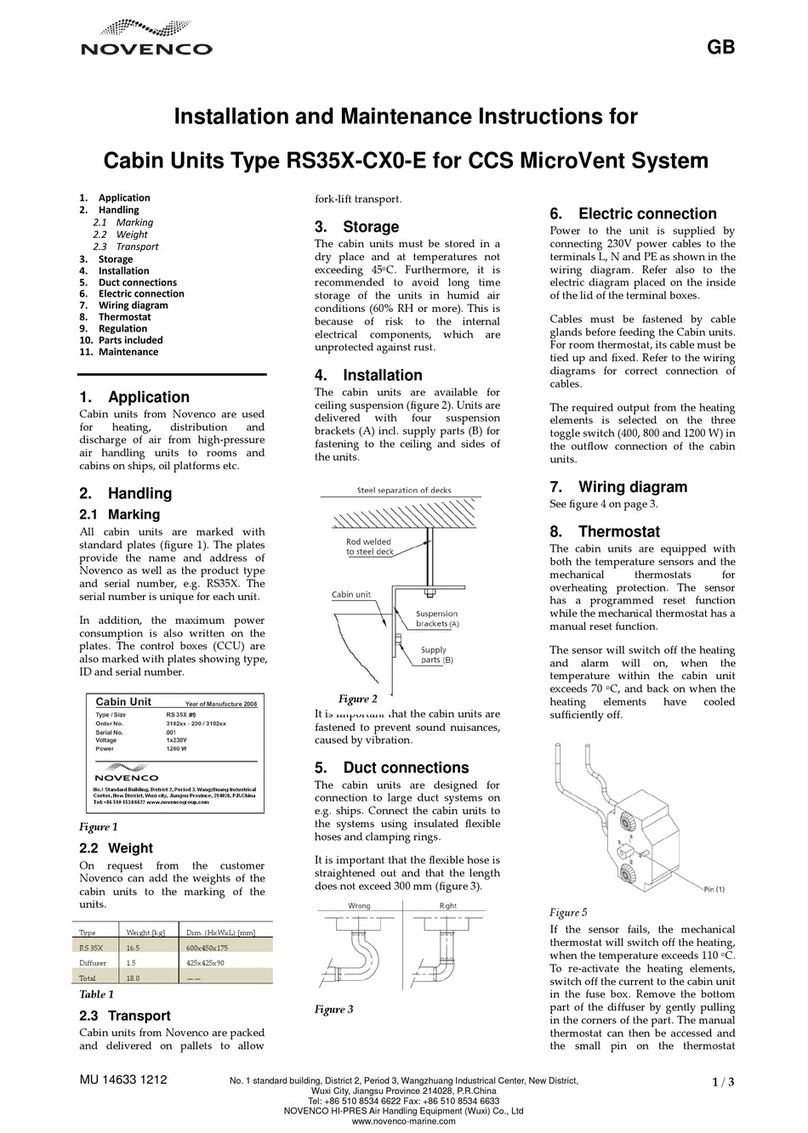
NOVENCO
NOVENCO RS35x-CX0-E series User manual

NOVENCO
NOVENCO Novax ACP Series Instruction Manual

NOVENCO
NOVENCO FALKINN ACN Instruction Manual

NOVENCO
NOVENCO NOVAX ACN-ACW-ARN Instruction Manual

NOVENCO
NOVENCO CNA Series Instruction Manual

NOVENCO
NOVENCO AUO 290 Instruction Manual
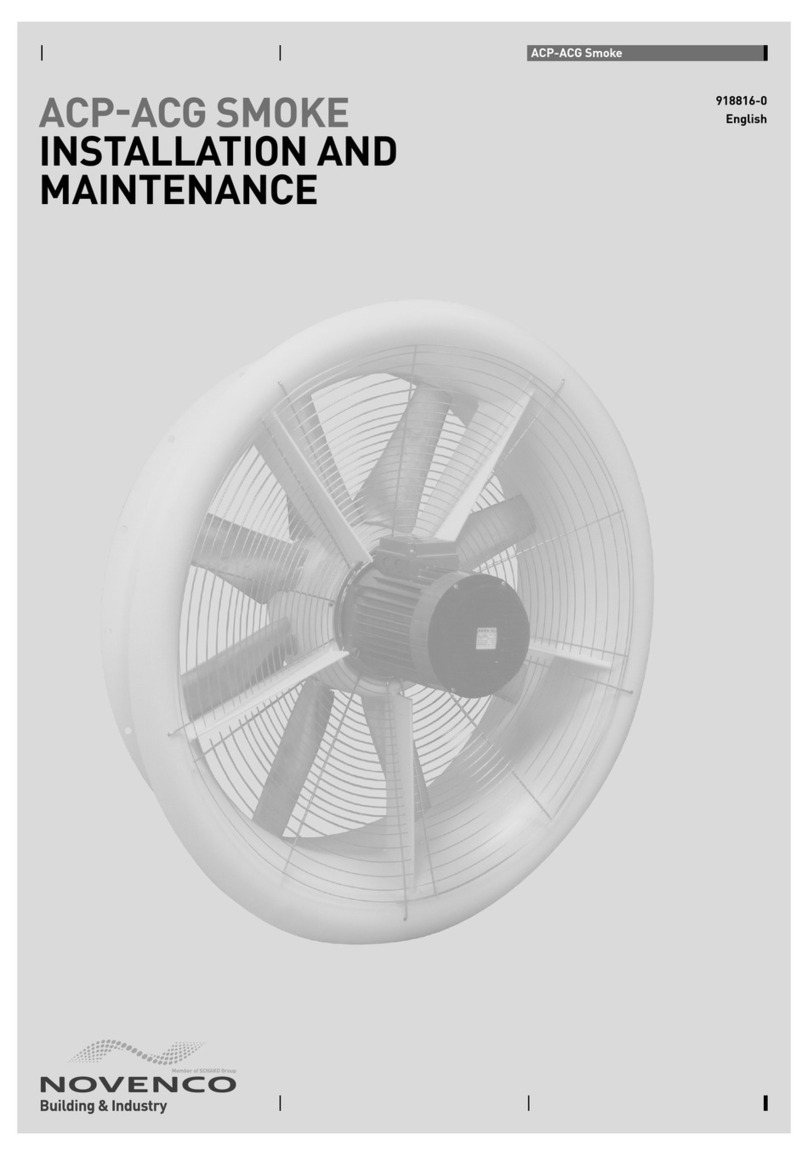
NOVENCO
NOVENCO ACP Series Instruction Manual
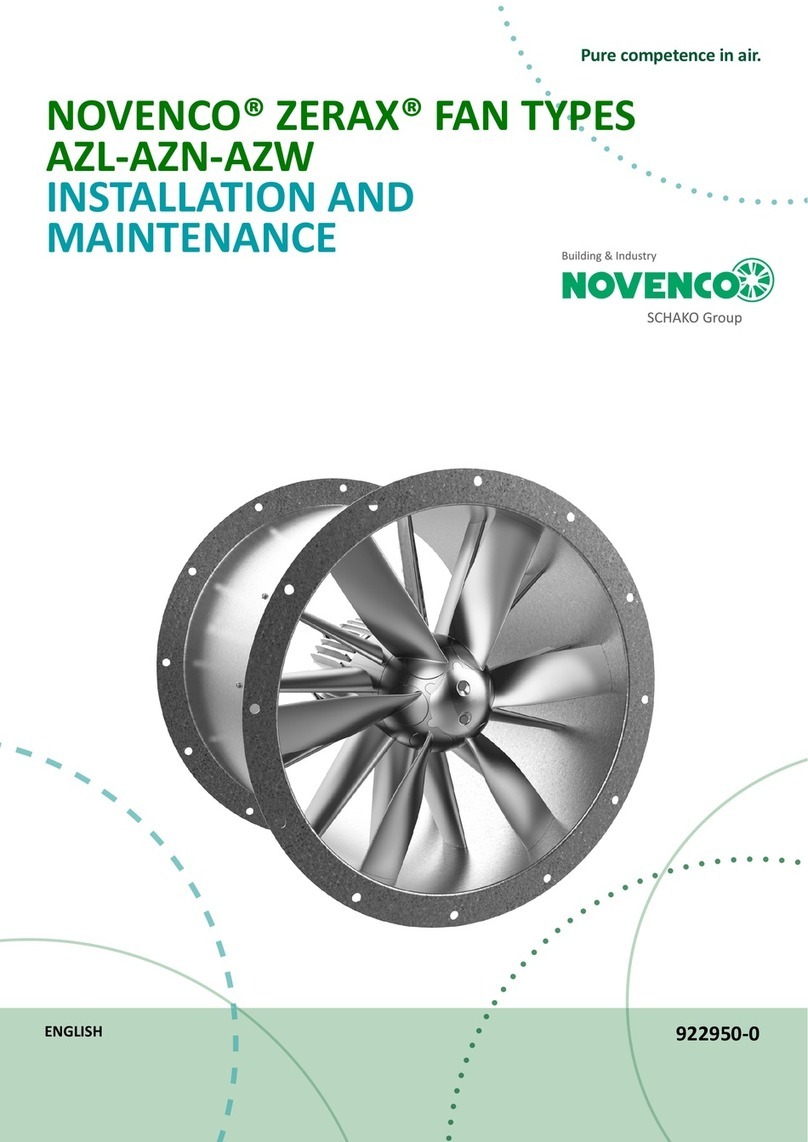
NOVENCO
NOVENCO ZERAX AZL-AZN-AZW Instruction Manual
Popular Fan manuals by other brands
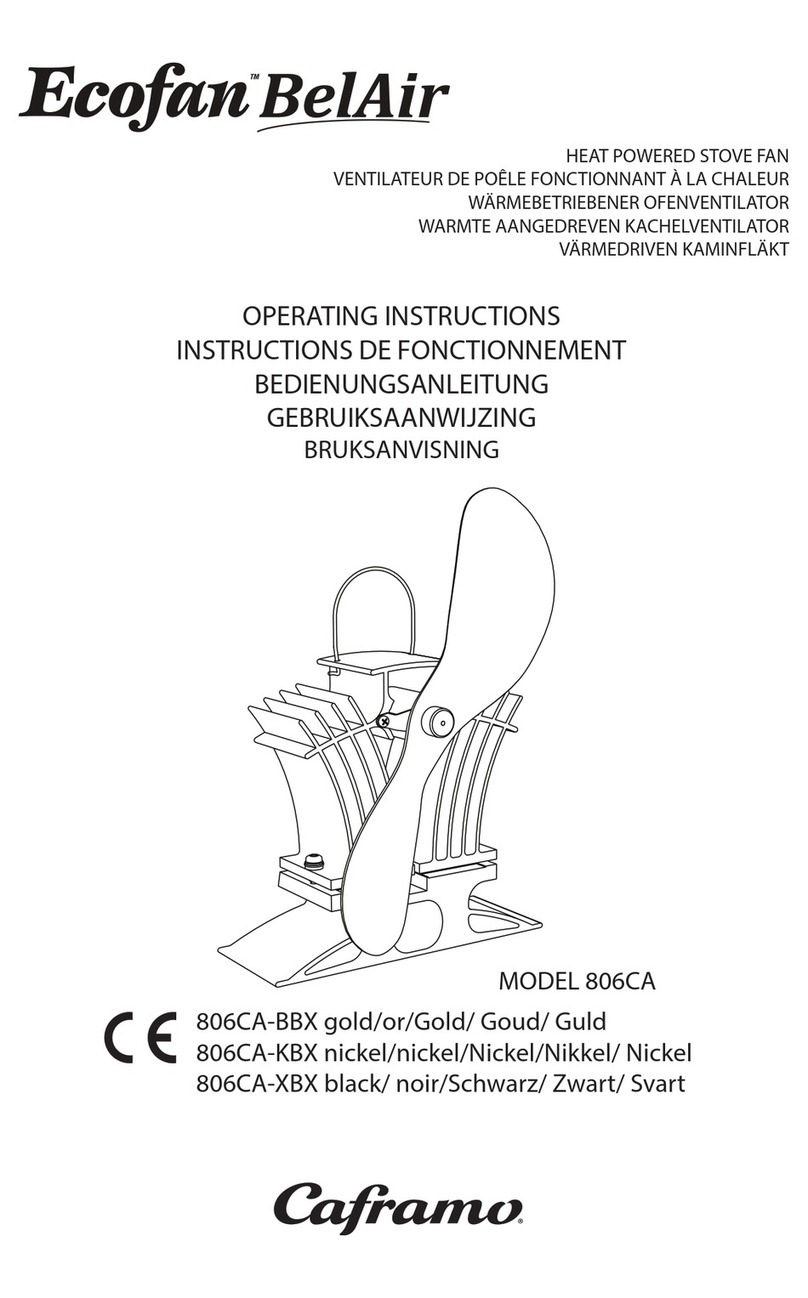
Caframo
Caframo Ecofan BelAir operating instructions

Black & Decker
Black & Decker BXFD52002GB Original instructions
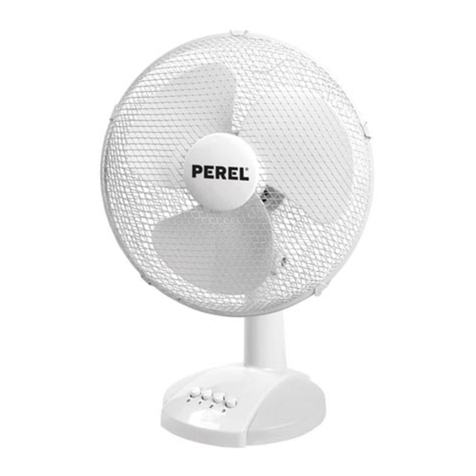
Perel
Perel TV76501 user manual

Savoy House
Savoy House Circulaire owner's manual
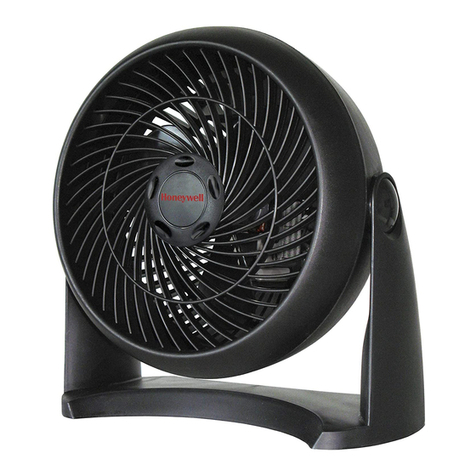
Honeywell
Honeywell HT-900 Series TURBO FORCE owner's manual
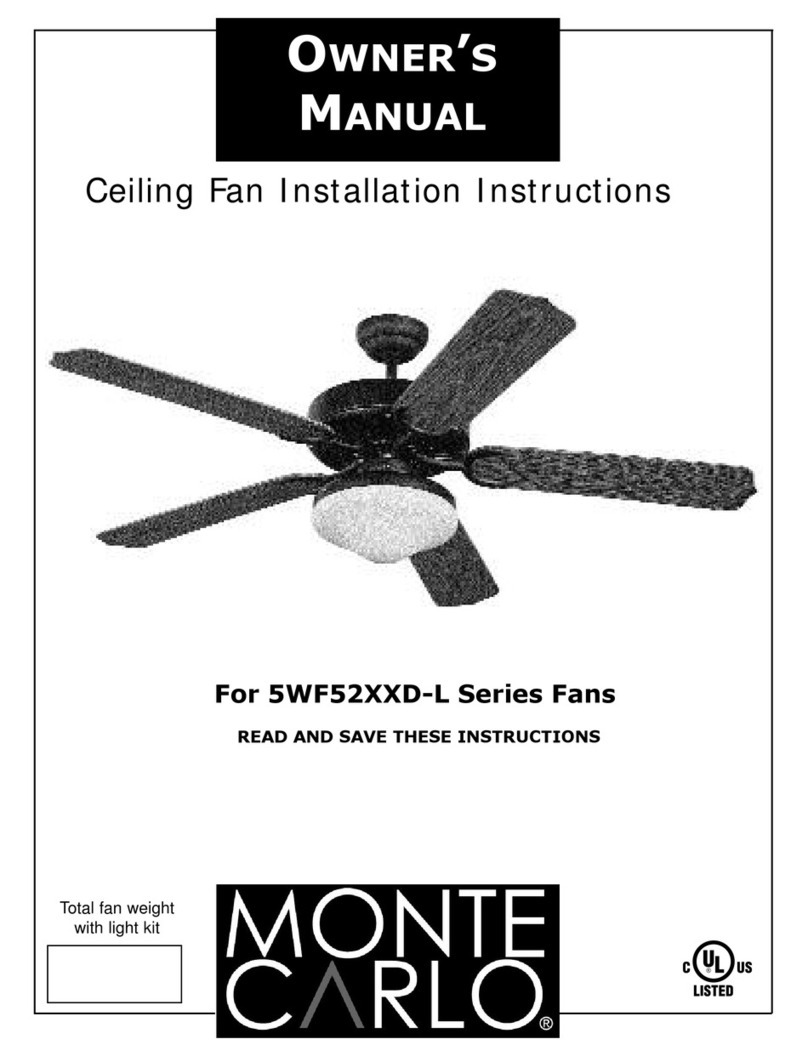
Monte Carlo Fan Company
Monte Carlo Fan Company 5WF52XXD-L Series owner's manual
